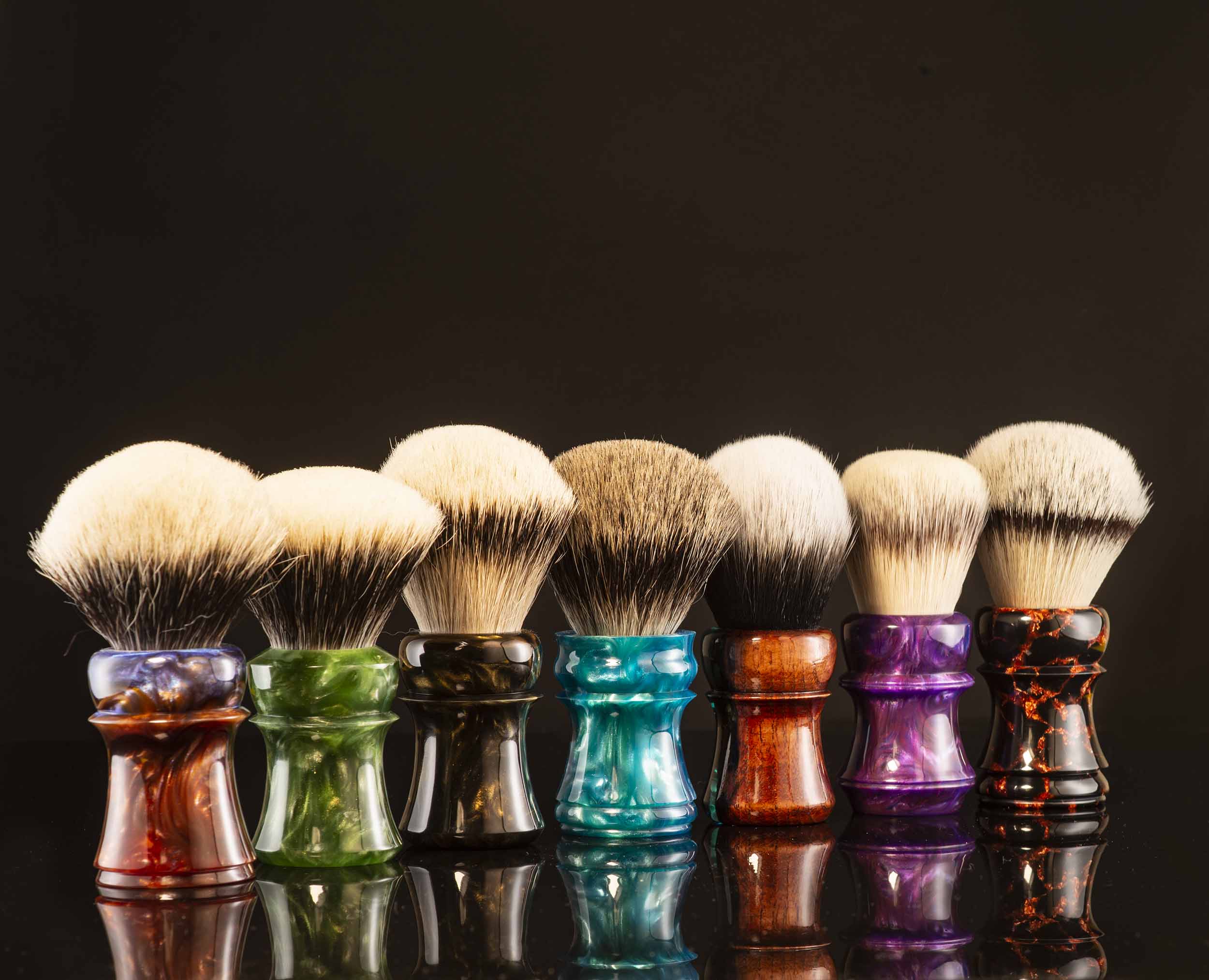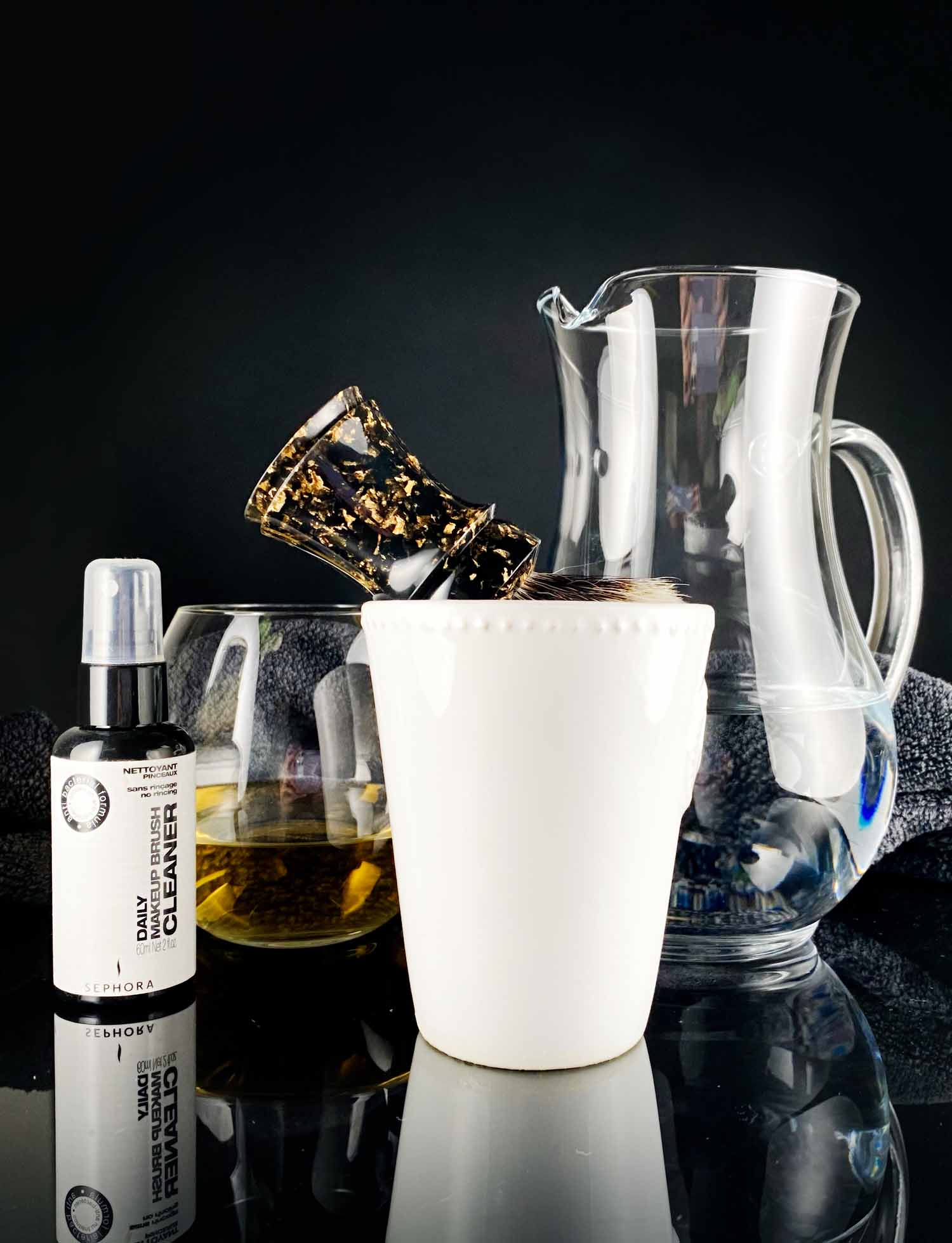Article: Shaving Brush Knots: What’s the best for you?

Shaving Brush Knots: What’s the best for you?
You decided to upgrade your shaving game by purchasing a quality shaving brush. The next question that may come to your mind is: what shaving brush knots should I consider? What bristles type are good for me?
When deciding what shaving brush knots are best for you, there are a few things to keep in mind:
- The bristles type: synthetic or natural;
- Your hair and skin type: do you have sensitive skin? Is your hair soft or hard?
- The shaving soap or cream you are going to use: is it creamy? Does it require a lot of water to lather?
- The shape of the knot: fan, bulb, flat top, hybrid.
- The price.
Let’s examine in depths each point.
 Shaving brush knots: synthetic or natural?
Shaving brush knots: synthetic or natural?
The bristles type is the very first thing to consider when choosing a shaving brush.
Natural bristles are obviously of animal origin and may be sourced from boar, horse or badger, while synthetic knots are artificial.
Boar
Boar bristles are the most common and cheap ones: you can easily find boar brushes in many stores and supermarkets, so they could be a nice option for a beginner.
The bristles are white or yellow, but you can find also dyed or striped knots, created to remind badger shaving brush knots.
Despite being largely available, using a boar shaving brush has some drawbacks: it needs several shaves before properly broken in and the feeling on the skin may be rough at first, so it’s not recommended for sensitive skin.
Furthermore, boar bristles may smell, they may also lose their shape quickly and the tips will eventually split over time.
Some argue that this will improve the lather quality, but there are surely more durable and soft options.
Horse
Horse bristles are having a comeback after a bad anthrax contamination during World War I that banned their usage.
They are somewhat a middle way between boar and badger hair: the shaving brush knots combine hair form the tail and the mane. The hair from the mane are delicate and soft, while the ones from the tail are coarse and strong.
Horse shaving brush knots are softer than boar ones, but the horse hair are quite brittle and prone to tangling, so you may need to comb them.
Lastly, horse bristles are floppier than their boar and badger counterparts and this could be problematic when lathering.
Badger
Badger hair are the most renowned and refined choice for shaving brush knots. They are clearly recognisable because of the bristles color stripes. Usually they have three bands of colors: a clear bottom, a darker center band and white tips, but in the some cases you may find two bands.
Despite the fact that there’s no standardised industry grading system, you may learn about various “grades” of badger hair: these grades vary a lot according to each manufacturer, but the most common ones, from cheapest to most expensive, are:
- Pure - thick and coarse bristles, often trimmed in shape, great backbone and high exfoliation properties.
- Best - full hairs, softer than the pure grade, but still good backbone and exfoliation;
- Super - full hairs, way softer than the best, light exfoliation and good massage on the skin. The tips of this option are lighter, but not as white as the last grade.
- Silvertip - the most rare and exquisite type of hair. The bristles are soft and the tips naturally white. The exfoliation provided is really light, while the massage on the skin is gentle and pleasant.
- Two band - these bristles are still a silvertip grade, but they only show two color bands. Furthermore, the backbone is strongest than the silvertip while the tips are super soft.
The silvertip and two band grades surely give the most luxurious feeling on the skin.
If you are looking for this kind of experience, we suggest Leonidam Two Band Badgers knots.
Synthetic
Finally, synthetic hair may come in the most different colors and are mostly made of nylon, but you can find also other materials.
Synthetic shaving brush knots are a durable and economic option for beginners: they can create a good lather and they dry quickly, so they’re particularly fit for travelling.
One of the major drawbacks of synthetic knots is their poor water retention property compared to natural bristles. Furthermore, the bristles are often trimmed in shape and the tips may feel a bit prickly, but you can also find very soft options, like our Silversynth knot, made to achieve the same softness of a natural hair silvertip knot.
If you are interested in a complete overview of synthetic knots, we suggest to browse this Sharpologist guide.
Hair and skin type: what knot is best for you?
Now we cleared what shaving brush knots type you may find, the next question is: “What’s the best for me?”.
Shaving with a brush is very different experience from splaying some foam on the face: the bristles not only have to create a rich lather, but they also have to raise the hair from the skin in order to prepare it for the razor and allow the closest shave possible.
If your hair is soft and you are not prone to ingrown hair, then you could consider softer bristles, while if you have very hard beard you should opt for stiffer bristles.
Sensitive skins should avoid the coarser knots, so if your skin demands it, prefer a gentle massage over exfoliation.
Shave soap or shave cream?
For every scent you may think of, there’s a shaving cream or soap. You can find various options for literally every pocket, but pay attention to the compactness of the product you choose.
Some shaving soaps are very hard and will need strongest bristles, other will need a lot of water to create lather, so you’ll need a knot with higher water retention.
Knot shapes
The shape of the knot is a purely aesthetic matter. It really comes down to personal taste and manual skill in creating the lather.
The most common shaving brush knot shape you may find is the bulb one, with a rounded top, but you can also find fan brushes and flat top brushes, and hybrid shapes.
Price
Last but not least, you may find that shaving brush knots prices vary a lot according to the bristle type, the density of the bristles and the assembly process.
We talked about bristles types at the very beginning of this article, so let’s move on to the density of the bristles.
The more bristles are knotted together, the fuller the knot will look. High density knots often have 1.5 times more hair in a single knot compared to standard density knots.
This quantity of hair provides unparalleled water retention, meaning that the lather is created more quickly and the knot itself can hold much more lather and can be used for several passes on the face.
Since this process requires more hair and specific tools to pack the bristles together, this knots are usually more expensive, but they also provide a unique shaving experience.
Price will also vary according to the assembly process: industrial or handcrafted.
While handcrafted shaving brush knots are rare and unique, they often can’t achieve the same density of a machinery.
Takeaways
Our journey through the different aspects of shaving brush knots touched many points and we hope you found some useful directions to make a reasoned decision.
As a golden rule, we suggest to always opt for a quality manufacturer, able to answer your doubts and suggest you the best product for your needs.
Happy shopping and happy shaving!
 Shaving brush knots: synthetic or natural?
Shaving brush knots: synthetic or natural?